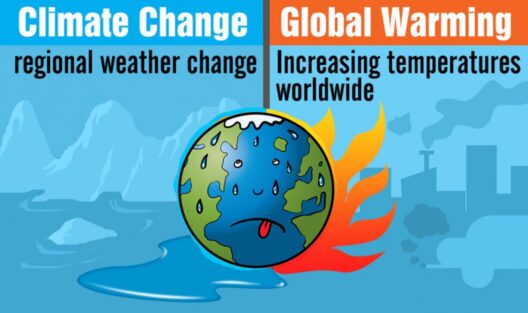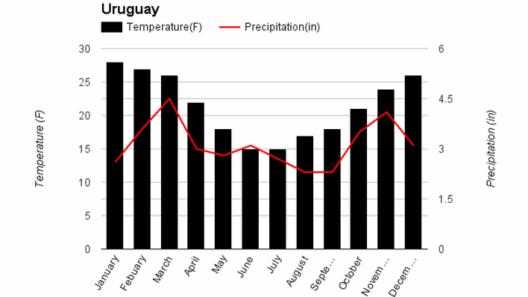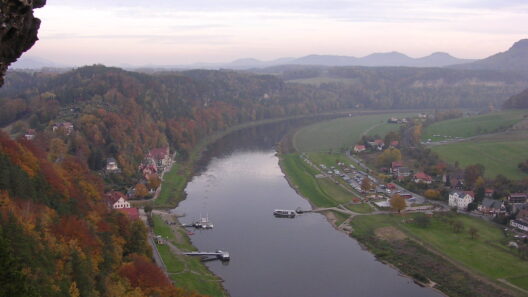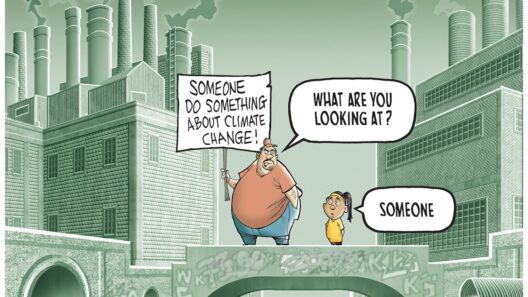The climate in Britain is notorious for its unpredictability and often described through the lens of “grey skies and gentle drizzles.” This phrase encapsulates the essence of the British meteorological experience—a blend of moist air masses, temperate conditions, and an ever-shifting atmospheric canvas. The geographical positioning of Britain, as an island nation adrift in the North Atlantic, significantly influences its climate, fostering a peculiar amalgam of oceanic and continental characteristics.
To truly understand the British climate, one must delve into its fundamental components: temperature, precipitation, and seasonal variations. The United Kingdom, with its maritime temperate climate, sees relatively mild winters and cool summers. These characteristics are primarily dictated by the North Atlantic Drift, a warm oceanic current that moderates temperatures. Because of this, the British Isles do not experience the extremes of weather often felt in continental regions. For instance, while winter in London rarely dips below freezing, summer temperatures may occasionally soar, but more often than not, a cool breeze offers a respite.
Precipitation is another defining aspect. The average annual rainfall varies significantly across the regions, from the arid expanses of East Anglia to the lush mountains of Wales and Scotland. It is intriguing to note that while Britain is renowned for its rain, it does not rain as much as one might think. On average, London receives approximately 600 millimeters of rainfall annually, which is less than cities such as Barcelona or Rome. Yet, the frequency of drizzles and low cloud-cover creates a stereotype that persists in global consciousness.
Seasonal transitions in Britain are subtle but speak volumes about the country’s climate. Spring often arrives softly, with budding flora and lengthening days that slowly warm the atmosphere. Conversely, autumn is marked by a tapestry of vibrant leaves, yet it also heralds heavier rainfall and increased windiness. Such transitions underscore the dynamic nature of the climate, imparting a variety of experiences across the seasons.
Observers often point out that the UK’s climate is a fleeting affair; one can bask in sunshine one moment, only to be doused by a sudden shower moments later. It is this volatility that offers a unique perspective on how residents and visitors alike adapt to such conditions. Perhaps that is why umbrellas and raincoats have essentially become cultural staples, equipping the populace to face whatever the capricious sky decides to dispense. Equally noteworthy is how the climate fosters a characteristic esprit de corps—a shared understanding of weather unpredictability. It brings communities together, often sparking conversations that revolve around the day’s weather conditions.
Despite the seemingly mundane nature of drizzle and cloud cover, there exists a beauty in the subdued monochrome palette of British skies. The ambience is often contrasted by the bright hues of flora that flourish amidst these atmospheric challenges. Country walking, an ever-popular pastime, takes on a certain charm when enveloped in a misty embrace, as the ethereal landscapes become accentuated with a veiled allure. Observations of wildlife, too, are subtly enriched by these conditions, with many species adapting remarkably well to the moist environment that the British climate provides.
In recent years, climate change has thrown into sharp relief the vulnerability of Britain’s climatic stability. Traditional weather patterns are shifting, influenced by global warming. Recent data indicates an increase in average temperatures and flooding occurrences, challenging the idyllic representation of gentle drizzles with more severe weather phenomena. This imperative highlights the need for an informed and proactive approach towards addressing imminent climatic adversities.
It is crucial to underscore that understanding the climate’s nuances goes beyond casual observation. Engaging with local communities about the environmental impacts of climate change fosters a greater appreciation for the ecological systems at play. Collaborative efforts are vital, from individual carbon footprint reduction to advocating for sustainable practices that offset the detrimental effects of greenhouse gas emissions.
Moreover, the interplay between urban and rural climates illuminates diverse challenges and adaptations that define British life. Urban centers such as London experience an “urban heat island” effect, where built environments amplify heat retention, thus complicating the prevailing climate patterns. Understanding this phenomenon is essential for city planners seeking to mitigate heat stress and manage rainwater effectively through green infrastructure.
Rural areas, on the other hand, remain susceptible to the vicissitudes of natural elements, fostering a fragile balance between agriculture and climate resilience. Sustainable farming initiatives aiming to harness local resources can yield benefits not only for the environment but also for local economies, as communities foster a deeper connection to their lands and resources.
In conclusion, Britain’s climate—a tapestry woven of grey skies, intermittent drizzle, and temperate variations—offers more than just a backdrop for daily life. It is an invitation to look closely, to appreciate the subtle shifts and underlying messages embedded within the weather patterns. Whether navigating through an unexpected downpour or relishing the cool breeze in summer, understanding Britain’s climate denotes a shift in perspective. It reveals not only the resilience of its inhabitants but also the urgent call to protect the delicate balance of an environment that has shaped the heart and soul of British society. Through curiosity and commitment, much can be learned about living harmoniously with nature, even beneath the ubiquitous grey skies.







